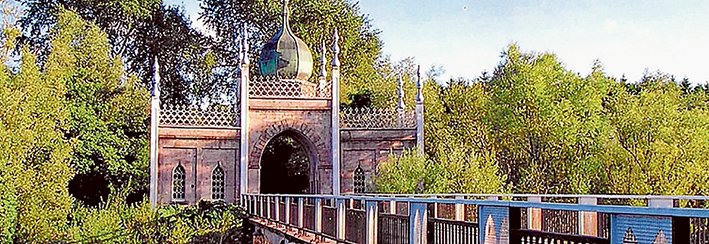
DROMANA resident and shire councillor Graham Pittock is off to Ireland in June, at the invitation of the matriarch of the 21st generation of FitzGeralds to occupy the land on which Dromana House stands.
Cr Pittock and his wife Prue will, with the FitzGerald descendants, celebrate 800 years of continuous occupancy of the land on which the splendid new house stands, high above the River Blackwater near Lismore in County Waterford, southeast Ireland.
The invitation reads: “Your township is named after our demesne and this unique link in history creates an important link, for you and for us.” It came personally from clan head “Barbara (Villiers-Stuart) Grubb”.
(A demesne is a piece of land attached to a manor and retained by the owner for their own use.)
“We remember with gratitude the way you honoured us at the time of … Victoria’s 150th year celebration,” she writes. “We are aware that you, personally, on behalf of Dromana township and your Mornington Peninsula Shire Council, chose to honour us in this way. …The beautifully crafted plaque [from the shire] has a prominent place on our walls.”
In Irish history terms, the house is quite new, a residence begun in the 1780s to replace Dromana castle, badly damaged in the wars of the 1640s and 1650s. The castle had been built in about 1200. Dromana House is now self-catering accommodation, set in extensive gardens and featuring an ancient outer fortification, boathouse and slipway to the fish-rich Blackwater. Parts of the castle foundations are visible from the river.
Intriguingly, Cr Pittock’s invitation requests “that you take an active and special role at some stage in the commemoration”. What could it be? Is it to do with a tree? Barbara (Villiers-Stuart) Grubb remains enigmatically silent. And so must this chronicler.
But there is an event in the family’s past that may be celebrated, possibly with the aid of Cr Pittock. And the story may contain a clue.
It involves Katherine FitzGerald, Countess of Desmond (c.1504-1604), known by writers of the period including Sir Walter Raleigh as “the old Countess of Desmond”, who, it is said, lived to 120 years and more – some say 140. Some less romantically inclined say a mere 100 years. Let’s take the Irish option and assert she made it to 140.
She met her end, so the story goes, after falling from a tree. Some say it was a nut. Others say a cherry up which she had shinned to gather fruit. But more of the countess, tough as a nut. Earlier than the tree episode, and widowed, she had faced eviction from the home her husband had left her. Sir Walter Raleigh, New England colonist and promoter of tobacco, owned the premises in which she lived. A Sir Richard Boyle bought the place and began eviction proceedings against her.
Undaunted, the countess sailed from Cork to Bristol in 1604 then walked to London to take steps to protect her interests. The unlikely legend says she made the trip with her invalid 90-year-old daughter, also named Katherine, trailing behind in a small cart. Towed by her mother? Legend does not say.
Her petition presented to James I, she returned home and met her maker later that year. She is believed to be buried, with her husband, in a Franciscan Friary at Youghal, at the mouth of the Blackwater.
No doubt Cr Pittock will enlighten us on the nature of the “active and special role” he will be asked to undertake while in Ireland, his memory sharpened by copious toasts taken in pints of gat (Guinness). All he would say was that he will be seated at the celebration between two dukes.
He will be well placed to pass on some Australian legends to the Irish gentry and a fine night will be had by all, at all. Ned Kelly is sure to get a run, along with William Buckley. And the Gary Abletts, snr and jnr, both passable exponents of Gaelic football.




